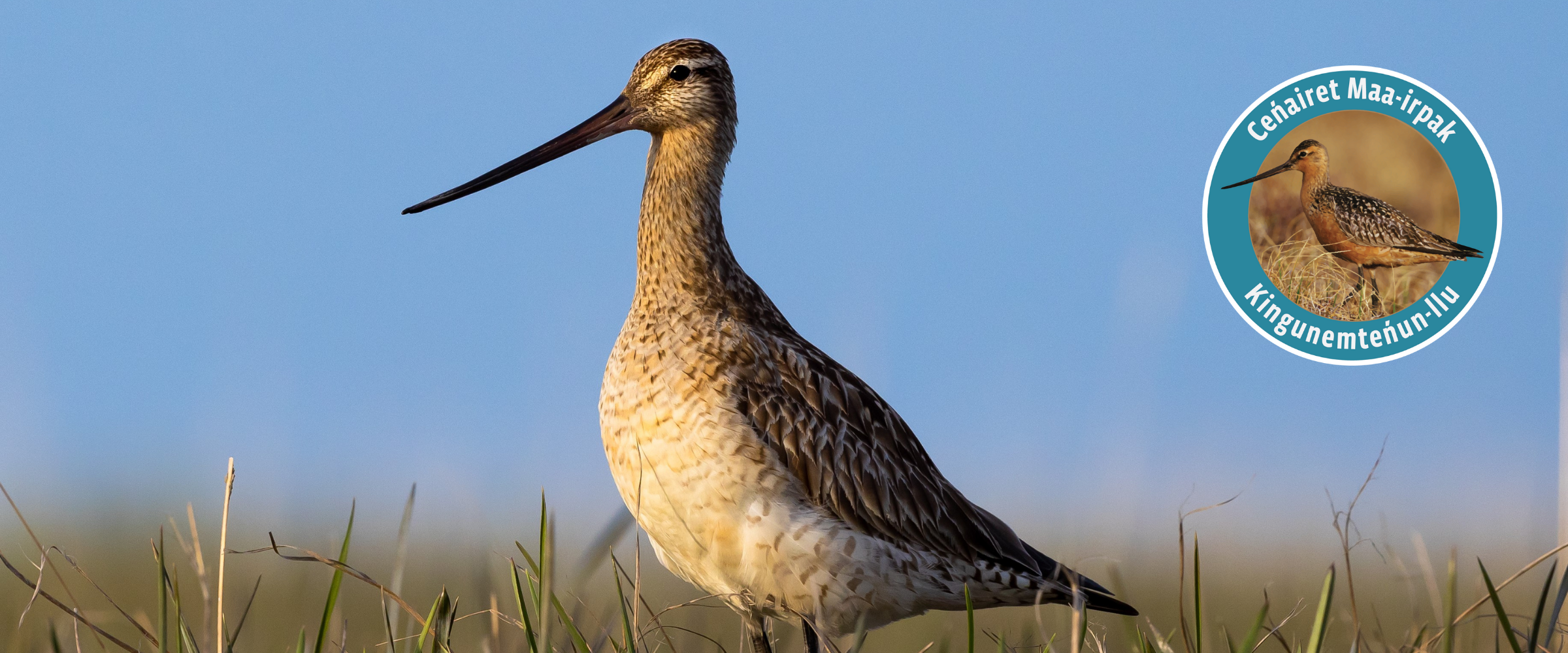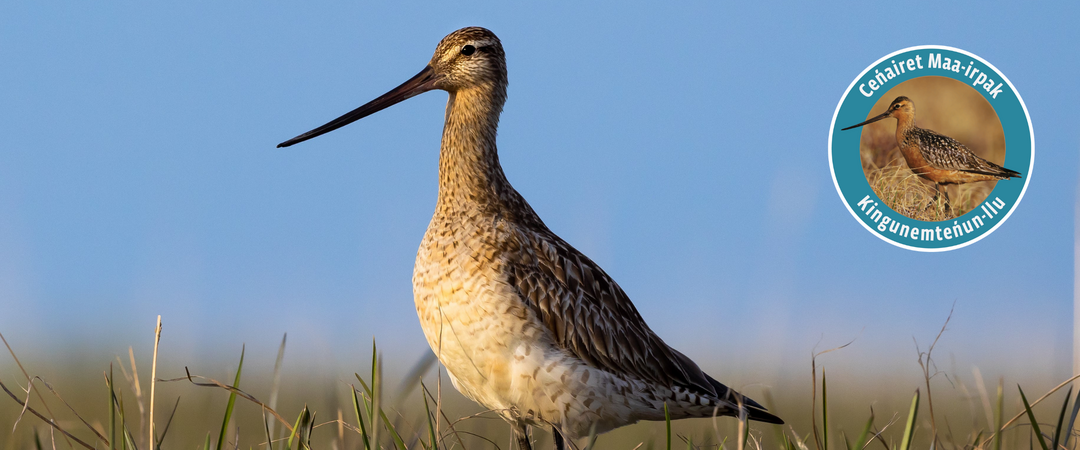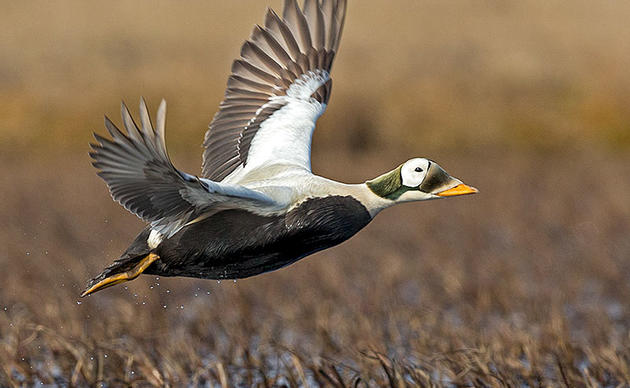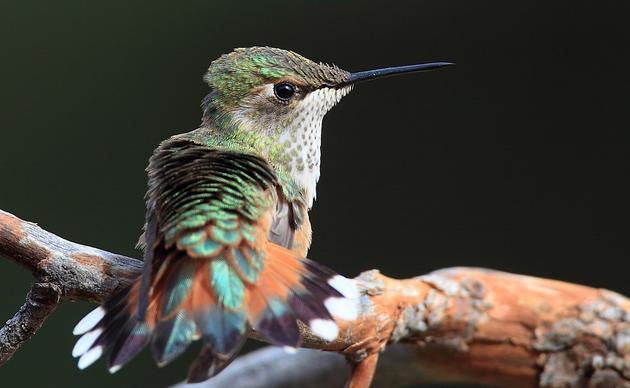Why Shorebirds?
Shorebirds breed in large numbers in western Alaska, then migrate across continents and oceans to wintering areas. Many factors are contributing to their population declines, especially habitat loss in wintering areas. Birds are subsistence food and cultural resources, and Native peoples are important partners in bird conservation.
Learning materials and activities are centered on the shorebirds, the Yup’ik culture and language, and the environments of western Alaska. Inspired by shorebirds’ lives across ecosystems and countries, the Shorebirds for Today & Tomorrow/Ceńairet Maa-irpak Kingunemteńun-llu program is inclusive of all peoples and cultures in Alaska and beyond. From 2022 to 2024, this educational program was used in 19 communities. The program supports:
- Awareness of and stewardship about shorebird ecology and conservation
- Transmission of Indigenous knowledge
- Learning and use of the Yup’ik language
- Youth interest in learning and nature
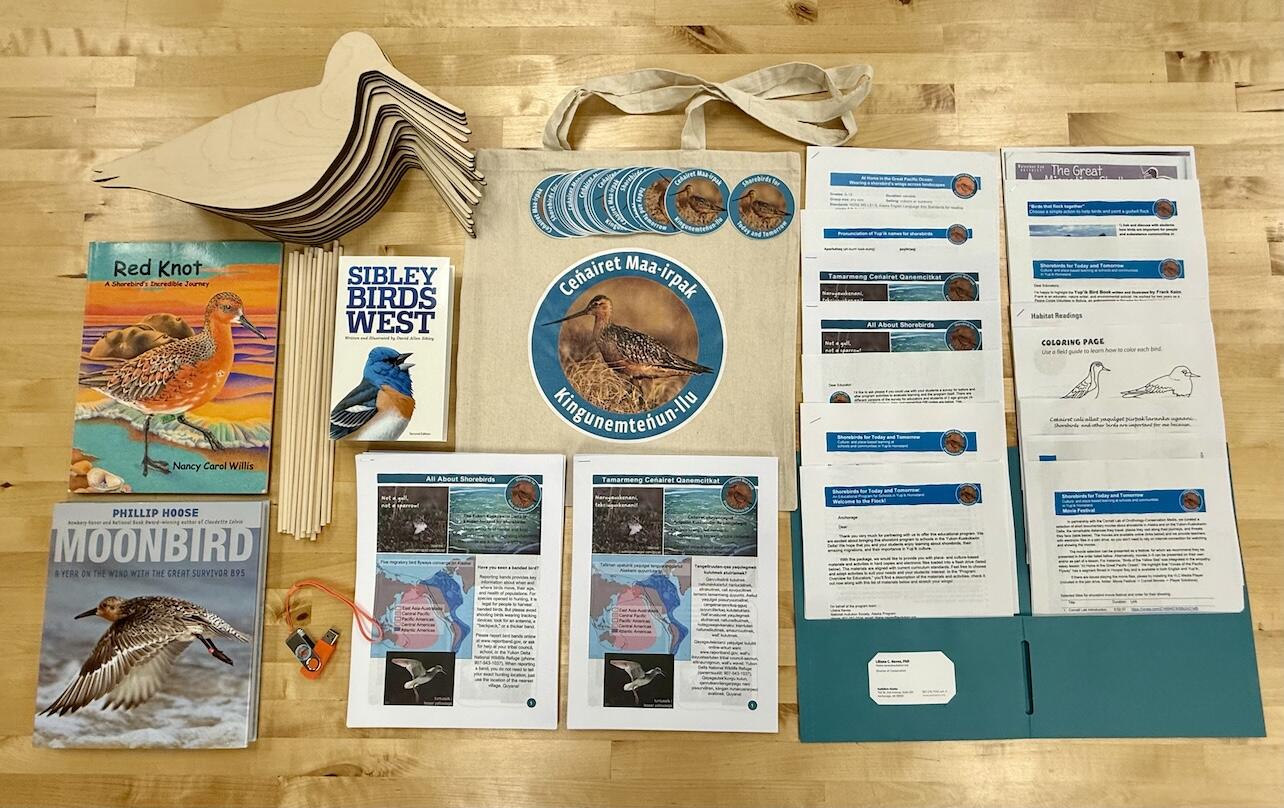
What You Get in a Classroom Kit
Migratory birds lend context for engaging lessons on science (form, function, and adaptations), geography (migrations), math (populations), language arts (English and Yup’ik), art (paint a godwit flock), Yuuyaraq (Yup’ik values, personal life skills, and health), and social studies (all places and cultures along shorebirds’ migration routes). The classroom kit includes lessons, slides, short documentary movies, bird call recordings, coloring sheets, stickers, and more in English and the Yup’ik language. Here is a sample of the materials. Educators may choose from and adapt activities.
Request a free classroom kit here!
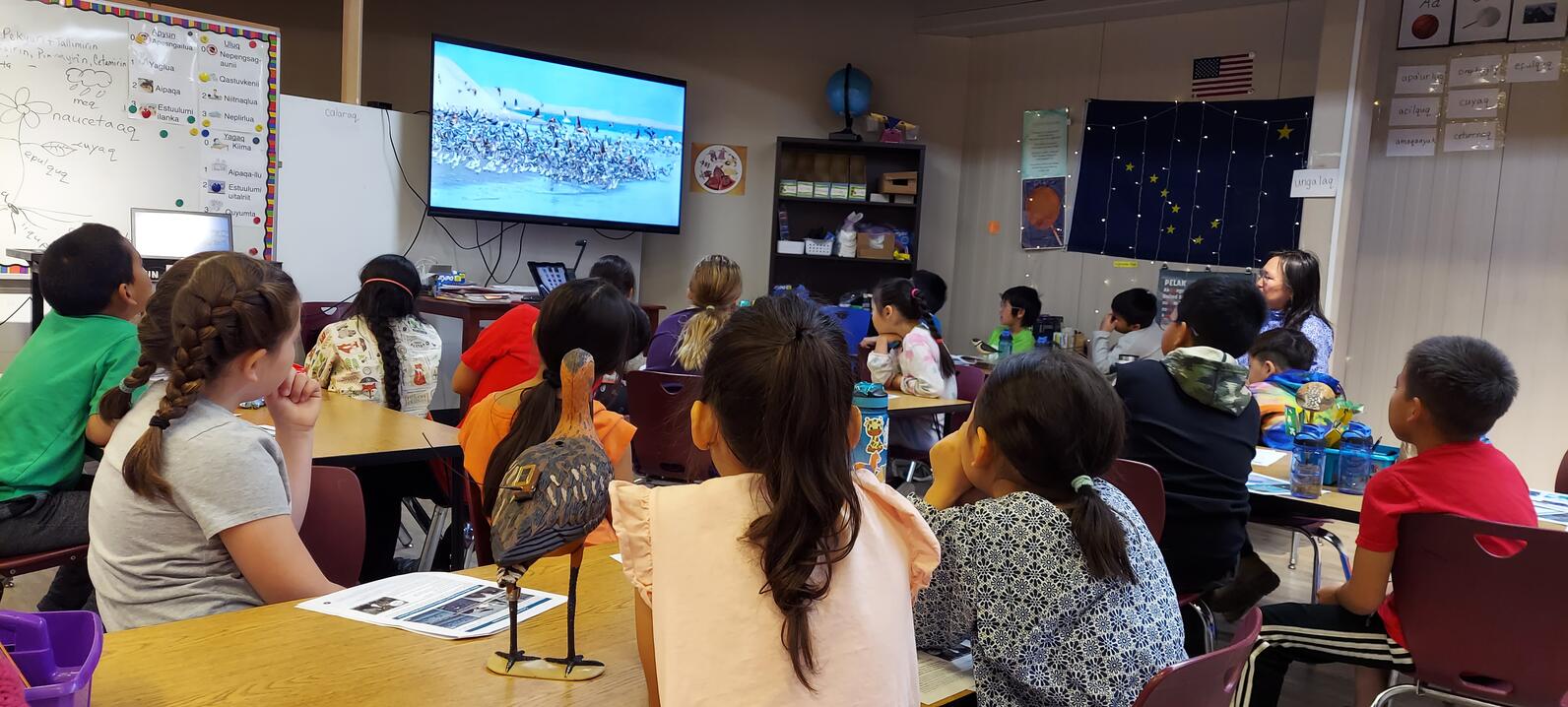
You’ve Received Your Shorebird Kit. Now What?
- Request an optional, kickstart, one-hour workshop for educators and learn more about shorebirds, this learning program, and birds in Yup’ik culture
- Get to know the contents of your kit, choose how to integrate them into your teaching plan, and take flight with your students on shorebirds’ wings!
- After using the program with your students, please provide comments or feedback through this form. This helps us understand how to best serve the needs of educators and learners.
For more information, please email liliana.naves@audubon.org or call 907-276-7034.
Partnerships include the Alaska Program of the National Audubon Society, the Cornell Lab of Ornithology-Conservation Media, local schools, and communities. Funding for this program is provided by Audubon Alaska.
How you can help, right now
Donate to Audubon
Help secure the future for birds at risk from climate change, habitat loss and other threats. Your support will power our science, education, advocacy and on-the-ground conservation efforts.
1% for the Planet
We are proud to be part of the 1% for the Planet network. If you own a business, please consider joining 1% for the Planet to support Audubon Alaska’s conservation efforts.

